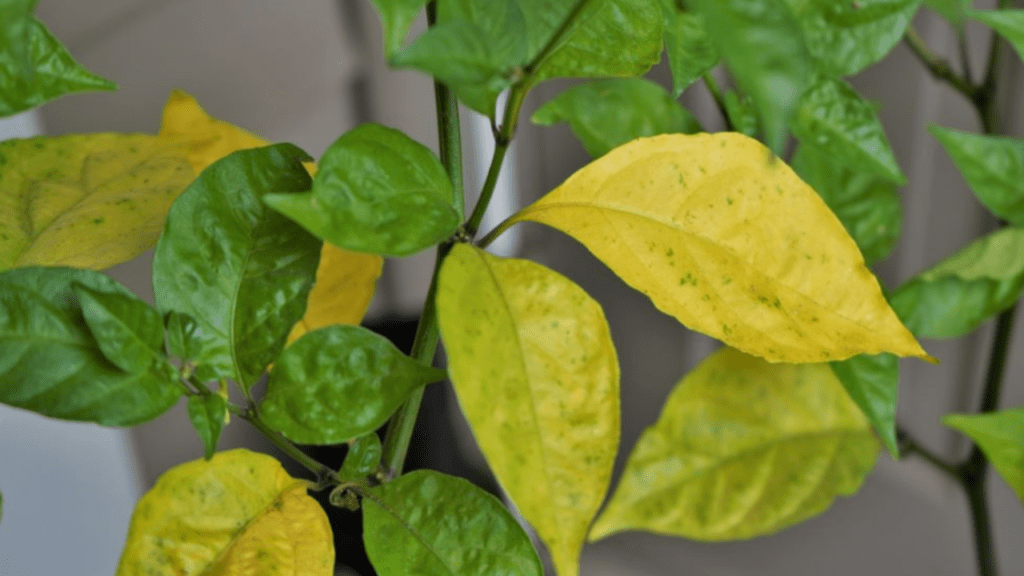
Pepper Leaves Turning Yellow: Top Reasons and How to Fix Them
Gardening enthusiasts often face the problem of pepper leaves turning yellow. This issue can be perplexing, but understanding the underlying causes and implementing effective solutions can help restore your pepper plants to their full health. In this comprehensive guide, we’ll explore the common reasons for yellowing leaves, how to prevent this issue, and what you can do to treat it.
Table of Contents
ToggleUnderstanding the Problem
What Yellow Leaves Indicate
Yellow leaves on pepper plants can indicate a variety of issues, including nutrient deficiencies, overwatering or underwatering, pests, or diseases. It’s important to carefully observe your plants and investigate the potential causes of the yellowing leaves in order to effectively address the problem.
Nutrient Deficiencies: Yellow leaves can be a sign of nutrient deficiencies, such as nitrogen, iron, or magnesium. Ensuring that your plants are receiving the proper balance of nutrients through fertilization and soil amendments can help prevent yellowing leaves.
Overwatering or Underwatering: Both overwatering and underwatering can cause stress to pepper plants, leading to yellow leaves. It’s important to maintain proper watering practices, allowing the soil to slightly dry out between waterings and ensuring good drainage to prevent root rot.
Pests and Diseases: Yellow leaves can also be a sign of pests, such as aphids or spider mites, or diseases like bacterial leaf spot or powdery mildew. Regular inspection of your plants and prompt treatment of any infestations or infections can help prevent further damage.
Effective Solutions
To address yellowing leaves on your pepper plants, it’s important to take a proactive approach to prevent and treat the underlying causes. This may include adjusting your watering practices, providing proper nutrition, and implementing pest and disease control measures.
By understanding the potential reasons for yellowing leaves and taking steps to address them, you can help your pepper plants thrive and produce a bountiful harvest. Remember to stay vigilant and proactive in caring for your plants to ensure their continued health and vitality.
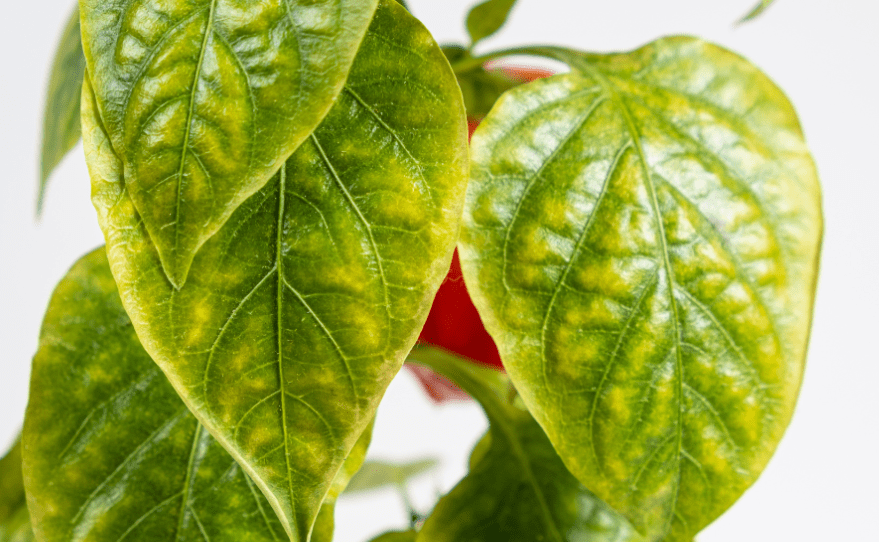
Importance of Addressing Yellow Leaves
Yellow leaves on plants can be a sign of various issues that need to be addressed. It’s important to maintain proper watering practices, allowing the soil to slightly dry out between waterings and ensuring good drainage to prevent root rot. Pests and diseases can also cause yellowing leaves, such as aphids, spider mites, bacterial leaf spot, or powdery mildew. Regular inspection of your plants and prompt treatment of any infestations or infections can help prevent further damage.
To address yellowing leaves on your plants, it’s crucial to take a proactive approach to prevent and treat the underlying causes. This may include adjusting your watering practices, providing proper nutrition, and implementing pest and disease control measures. By understanding the potential reasons for yellowing leaves and taking steps to address them, you can help your plants thrive and produce a bountiful harvest.
Remember, staying vigilant and proactive in caring for your plants is essential to ensure their continued health and vitality. Don’t ignore yellow leaves – address the issue and take steps to keep your plants healthy!
Common Causes of Pepper Leaves Turning Yellow
Nutrient Deficiencies
Nutrient deficiencies can be a common cause of yellowing leaves in plants. It’s important to ensure that your plants are receiving the proper nutrients they need to thrive. If your plants are lacking essential nutrients such as nitrogen, potassium, or magnesium, they may start to show signs of yellowing leaves. To address this issue, it’s crucial to provide your plants with the necessary nutrients through fertilizer or soil amendments. Regularly testing your soil and adjusting your fertilization practices can help prevent nutrient deficiencies and keep your plants healthy. Don’t overlook the importance of proper nutrition for your plants – addressing nutrient deficiencies can help prevent yellowing leaves and promote robust growth. Take the time to care for your plants and give them the nutrients they need to flourish. Your efforts will be rewarded with healthy, vibrant plants that will produce a plentiful harvest.
Watering Issues
Are you struggling with watering issues in your garden? It’s crucial to address this problem to ensure the health and vitality of your plants. Overwatering or underwatering can both lead to yellowing leaves and stunted growth. It’s important to find the right balance and provide your plants with the proper amount of water they need to thrive. Consider investing in a moisture meter to accurately gauge the soil moisture level and adjust your watering schedule accordingly. Additionally, make sure to water your plants at the base and avoid getting the leaves wet, as this can lead to disease and fungus issues. Proper watering is essential for the health of your plants, so take the time to assess and address any watering issues to promote robust growth and vibrant foliage. Your efforts will be rewarded with a flourishing garden that brings joy and beauty to your outdoor space.
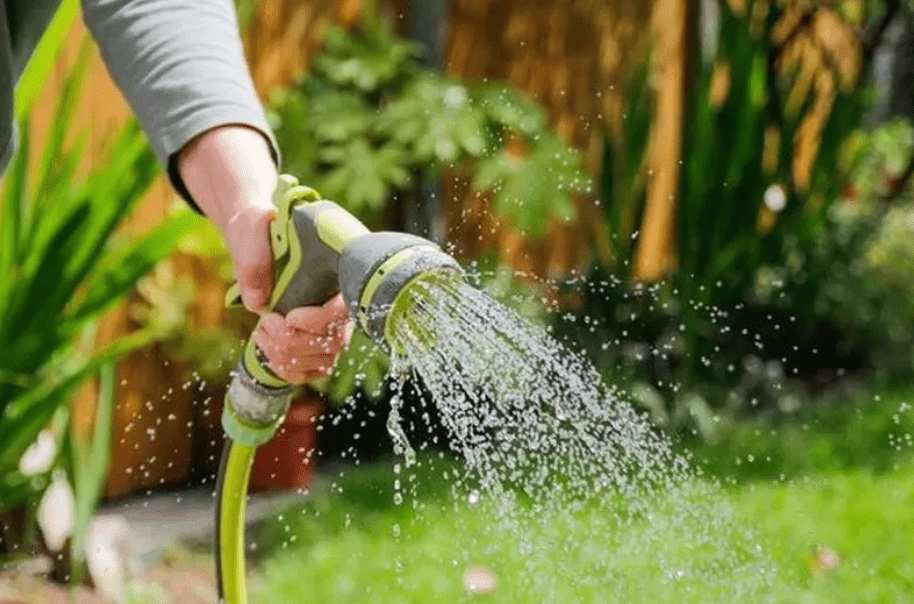
Soil pH Imbalance
Is a common issue that can have a big impact on the health and growth of your plants. It’s important to address this problem to ensure the health and vitality of your garden. When the soil pH is too acidic or too alkaline, it can affect the availability of essential nutrients for your plants, leading to yellowing leaves and stunted growth.
To combat this issue, it’s important to test the pH of your soil and make any necessary adjustments to bring it into the optimal range for plant growth. Adding organic matter such as compost can help to balance the pH and improve the overall health of your soil. Additionally, using pH-specific fertilizers can help to maintain the correct pH levels for your plants.
It’s crucial to provide your plants with the right amount of water, as overwatering or underwatering can also contribute to pH imbalance. Using a moisture meter can help you accurately gauge the moisture level in the soil and adjust your watering schedule accordingly. Proper watering techniques, such as watering at the base of the plants to avoid wetting the leaves, can also help to prevent pH imbalance and promote healthy plant growth.
By taking the time to address soil pH imbalance and provide your plants with the proper care and attention they need, you can ensure a thriving and beautiful garden. Your efforts will be rewarded with lush, vibrant plants and a more enjoyable outdoor space for you to relax and enjoy.
Pests and Diseases
Can wreak havoc on your garden and ruin all of your hard work. But there are ways to prevent and combat these common issues. One way to prevent pests and diseases is to practice good garden hygiene. This means keeping your garden clean and free of debris that can harbor pests and diseases. Another key method is to choose disease-resistant plant varieties and to rotate your crops to prevent the buildup of pests and diseases in the soil. Additionally, using natural predators and beneficial insects can help to manage pest populations in your garden without the use of harmful chemicals. It’s also important to regularly inspect your plants for signs of pests or diseases and to take action at the first sign of trouble. There are organic insecticides and fungicides available that can help to effectively manage pest and disease issues while still being safe for the environment. By being proactive and taking steps to prevent and manage pests and diseases in your garden, you can ensure a healthy and thriving garden that will bring you joy and satisfaction. Don’t let pests and diseases ruin your gardening experience – take action and protect your plants for a beautiful and abundant garden.
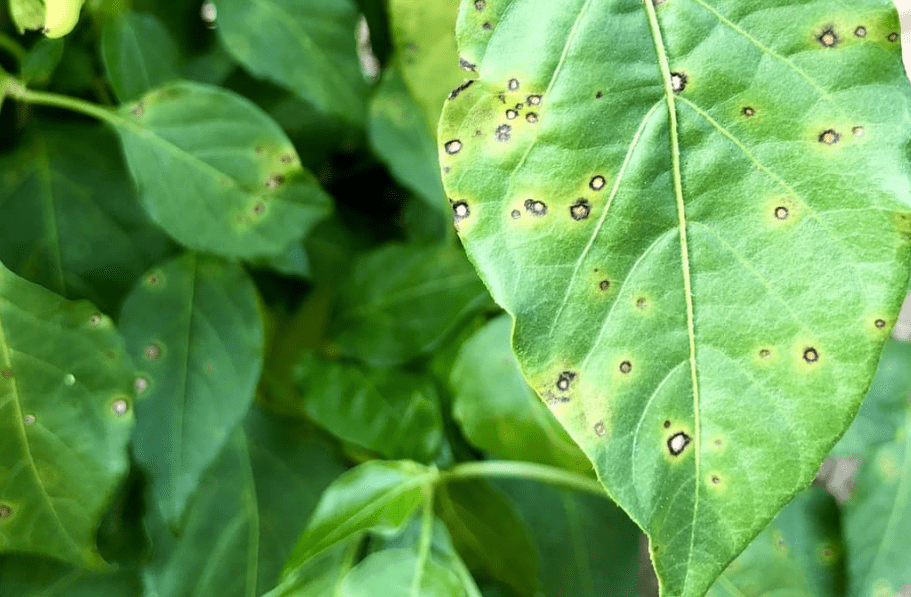
Environmental Stress
Is a real issue that we all need to be aware of and take action against. We can’t just sit back and watch as our environment deteriorates. It’s our responsibility to take care of our planet and make sure that we are doing everything we can to protect it. One way we can do this is by taking care of our gardens in an environmentally friendly way. By keeping our gardens clean and free of debris, choosing disease-resistant plant varieties, and using natural predators and beneficial insects, we can manage pest populations without harming the environment. We need to be proactive and take steps to prevent and manage pests and diseases in our gardens. By doing so, we can ensure a healthy and thriving garden that will bring us joy and satisfaction. Let’s take action and protect our plants for a beautiful and abundant garden while also being mindful of our impact on the environment.
Preventing Yellow Pepper Leaves
Proper Soil Preparation
Is essential for a successful garden. By taking the time to properly prepare the soil, you can ensure that your plants have the nutrients they need to thrive. This means testing the soil to understand its pH levels and nutrient content, adding organic matter such as compost or aged manure, and aerating the soil to improve its structure.
Proper soil preparation not only benefits your plants, but it also benefits the environment. By using natural and organic methods to enrich the soil, you can reduce the need for chemical fertilizers and pesticides that can harm the environment. Additionally, healthy soil can help prevent erosion and runoff, which can have negative effects on nearby water sources.
By taking the time to properly prepare your soil, you are taking an active step in caring for the environment and ensuring the success of your garden. Let’s all do our part to protect the planet and create beautiful, sustainable gardens through proper soil preparation.
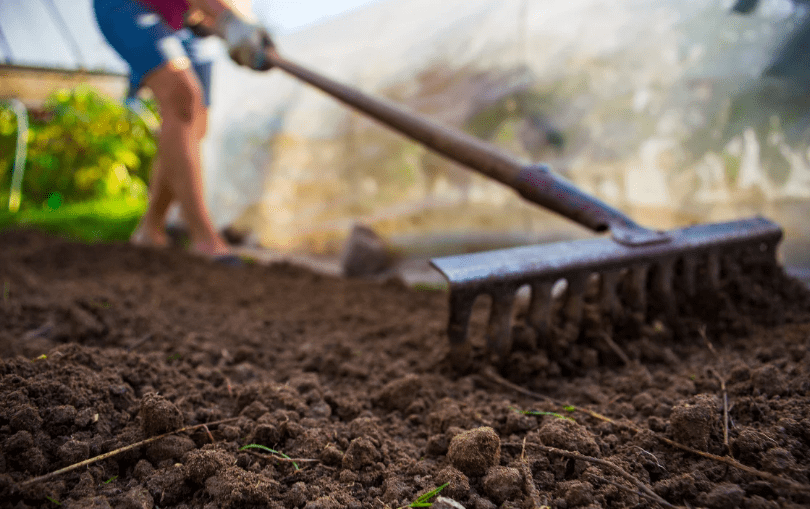
Nutrient Management
Is a crucial aspect of gardening and agriculture. It is important to ensure that the soil has the right balance of nutrients to support the growth of healthy plants. By managing nutrients in the soil, you can minimize waste, reduce the risk of nutrient pollution, and improve the overall health of the ecosystem.
To effectively manage nutrients, it is important to take into account the specific needs of the plants you are growing. Different plants require different levels of nutrients, so it is important to tailor your nutrient management plan accordingly. This may involve conducting soil tests, using organic fertilizers, and implementing crop rotation to replenish nutrients in the soil.
Proper nutrient management not only benefits the plants and the soil, but it also has a positive impact on the surrounding environment. By minimizing nutrient runoff and leaching, you can help protect nearby water sources from pollution and support the health of aquatic ecosystems.
In conclusion, nutrient management is an essential practice for anyone involved in gardening or agriculture. By taking the time to understand the nutrient needs of your plants and implementing sustainable nutrient management practices, you can contribute to the health of the environment and the success of your crops. Let’s all work together to responsibly manage nutrients and promote the long-term sustainability of our soil and water resources.
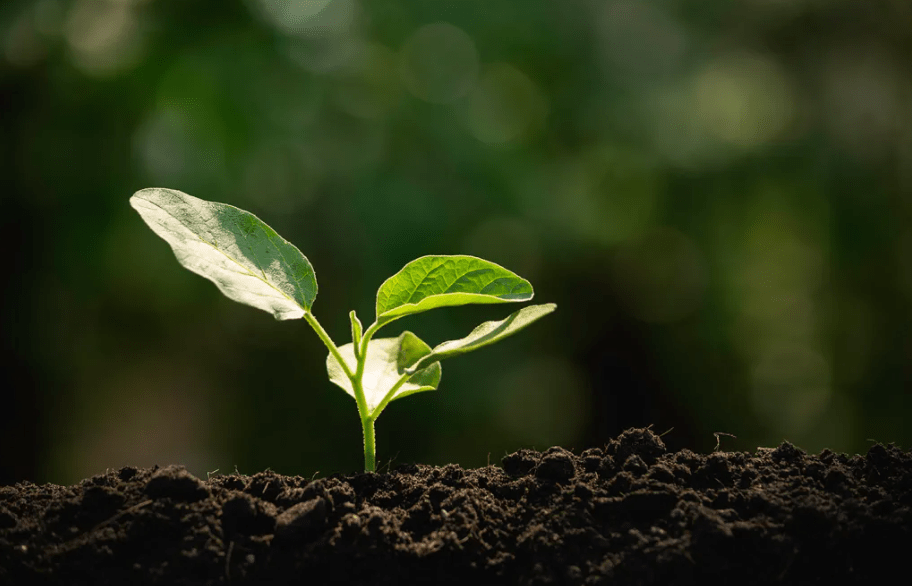
Consistent Watering Practices
Are crucial for the health and growth of your plants. It is important to establish a regular watering schedule and stick to it in order to ensure that your plants are receiving the water they need to thrive. Consistency in watering helps to prevent under-watering or over-watering, which can lead to stunted growth or root rot. By consistently watering your plants, you are providing them with the ideal conditions to absorb nutrients and develop strong root systems. This will ultimately result in healthier and more resilient plants.
It is also important to consider the specific needs of each plant when it comes to watering. Some plants may require more frequent watering, while others may be able to tolerate dry conditions. Understanding the individual needs of your plants will help you to tailor your watering practices to ensure optimal growth and health.
Consistent watering practices are not only beneficial for the plants, but they also contribute to the overall sustainability of your garden or landscape. By efficiently using water and avoiding wastage, you are promoting environmental conservation and reducing water consumption. Additionally, proper watering practices can help to prevent soil erosion and maintain the integrity of the soil structure.
In conclusion, consistent watering practices are essential for the health and success of your plants. By establishing a regular watering schedule and meeting the specific needs of each plant, you can promote optimal growth and contribute to environmental sustainability. Let’s all strive to be responsible stewards of water and support the flourishing of our plants and ecosystems.
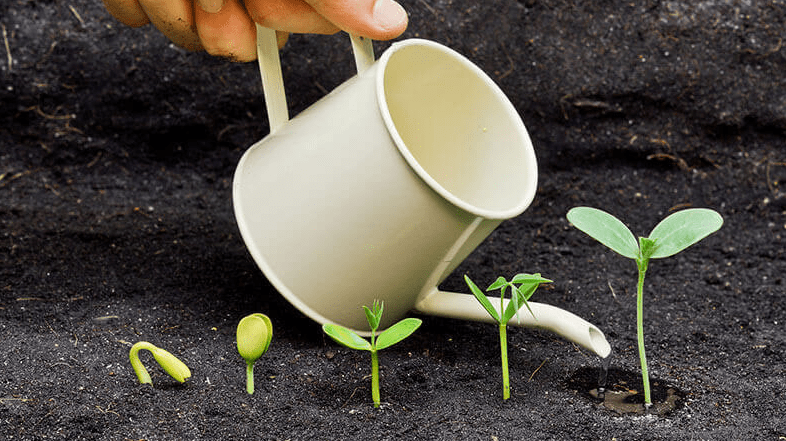
Monitoring and Controlling Pests
Is essential for maintaining the health and productivity of your garden or landscape. Pests can cause significant damage to your plants, leading to stunted growth and decreased yields. By regularly inspecting your plants for signs of pest infestations and implementing appropriate control measures, you can protect your plants from harm and ensure their optimal growth and development. Integrated pest management techniques, such as the use of natural predators and organic pesticides, can help to effectively control pest populations while minimizing harm to the environment. Additionally, proper sanitation practices and the removal of plant debris can help to prevent pest infestations and promote a healthy growing environment for your plants. By staying vigilant and taking proactive measures to monitor and control pests, you can safeguard the health and vitality of your garden or landscape. Let’s work together to protect our plants from pests and support the flourishing of our green spaces.
Optimizing Growing Conditions
Is essential for maintaining the health and productivity of your garden or landscape. Monitoring and controlling pests is a crucial aspect of creating an optimal growing environment for your plants. Pests can cause significant damage to your plants, leading to stunted growth and decreased yields. By regularly inspecting your plants for signs of pest infestations and implementing appropriate control measures, you can protect your plants from harm and ensure their optimal growth and development.
Integrated pest management techniques, such as the use of natural predators and organic pesticides, can help to effectively control pest populations while minimizing harm to the environment. Additionally, proper sanitation practices and the removal of plant debris can help to prevent pest infestations and promote a healthy growing environment for your plants.
By staying vigilant and taking proactive measures to monitor and control pests, you can safeguard the health and vitality of your garden or landscape. Let’s work together to protect our plants from pests and support the flourishing of our green spaces. Remember, the success of your garden or landscape depends on the hard work you put into optimizing growing conditions and controlling pests. Let’s help each other reach our goals and create beautiful, thriving green spaces.
Treating Yellowing Pepper Leaves
Immediate Actions
By regularly inspecting your plants for signs of pest infestations and implementing appropriate control measures, you can protect your plants from harm and ensure their optimal growth and development. Integrated pest management techniques, such as the use of natural predators and organic pesticides, can help to effectively control pest populations while minimizing harm to the environment. Additionally, proper sanitation practices and the removal of plant debris can help to prevent pest infestations and promote a healthy growing environment for your plants. By staying vigilant and taking proactive measures to monitor and control pests, you can safeguard the health and vitality of your garden or landscape. Let’s work together to protect our plants from pests and support the flourishing of our green spaces. Remember, the success of your garden or landscape depends on the hard work you put into optimizing growing conditions and controlling pests. Let’s help each other reach our goals and create beautiful, thriving green spaces.
Correcting Nutrient Deficiencies
Is crucial for the health and vitality of your plants. When you notice yellowing leaves on your pepper plants, it could be a sign of a nutrient deficiency. Taking immediate action is important to address this issue. First, consider testing the soil to determine which nutrients are lacking. Once you have identified the specific nutrient deficiency, you can then take steps to correct it. This may involve adding a balanced fertilizer to the soil or using organic amendments to improve nutrient levels. It’s important to be proactive in addressing nutrient deficiencies to ensure the overall health and productivity of your plants. By working together and sharing knowledge, we can support each other in creating thriving and vibrant gardens. Let’s commit to addressing nutrient deficiencies and promoting the growth and well-being of our plants.Together, we can achieve beautiful and flourishing green spaces for all to enjoy.
Managing Pests and Diseases
is crucial for maintaining the health and vitality of your plants and garden. Pests and diseases can wreak havoc on your plants, causing damage and reducing their overall productivity. It’s important to take immediate action when you notice any signs of pests or diseases in your garden. This may involve implementing integrated pest management strategies, such as introducing natural predators or using organic pesticides to control pest populations. Additionally, practicing good garden hygiene, such as removing dead or diseased plant material, can help prevent the spread of diseases. By being proactive and vigilant in managing pests and diseases, you can ensure the long-term health and success of your garden. Let’s work together to create a thriving and pest-free environment for our plants to flourish. With determination and a united effort, we can overcome the challenges of managing pests and diseases and enjoy a beautiful and thriving garden.
Alleviating Environmental Stress
Is crucial for the health and vitality of our plants. Pests and diseases can quickly take a toll on our gardens, but by taking proactive measures, we can prevent and control these issues. Integrated pest management strategies, such as introducing natural predators and using organic pesticides, are effective ways to manage pest populations without harming the environment. Additionally, practicing good garden hygiene by removing dead or diseased plant material can help prevent the spread of diseases. By working together and supporting one another in our gardening efforts, we can create a thriving and pest-free environment for our plants to flourish. Let’s set the goal of maintaining a healthy and beautiful garden by taking action to alleviate environmental stress. With determination and a united effort, we can overcome the challenges of managing pests and diseases and enjoy the rewards of a thriving garden.
In conclusion, taking care of your pepper plants is important for their overall health and productivity. By understanding the reasons why pepper leaves turn yellow and implementing the solutions we’ve provided, you can ensure that your plants stay healthy and continue to produce an abundant harvest. Don’t let yellow leaves discourage you—take action and watch your pepper plants thrive!
Frequently asked questions And Answer
The top reasons for pepper leaves turning yellow can be due to overwatering, nutrient deficiencies, pests or diseases, or environmental stress such as extreme temperatures or inadequate sunlight.
To fix yellowing pepper leaves, you should first assess the watering schedule and adjust it as needed. Check for nutrient deficiencies and consider using a balanced fertilizer. Inspect the plants for pests and diseases and take appropriate measures to control them. Lastly, ensure that the plants are getting the right amount of sunlight and are not exposed to extreme temperatures.
Yes, you can use natural remedies such as neem oil for pest control, compost or organic fertilizers for nutrient deficiencies, and proper watering and sunlight management to prevent environmental stress.
In most cases, yellow pepper leaves can be saved by addressing the underlying issues causing the yellowing and providing the necessary care and attention to the plants.
Pepper plants should be watered when the top inch of soil is dry. It’s important to avoid overwatering, as this can lead to root rot and yellowing leaves.
It is normal for pepper plants to lose some older leaves as they grow, but widespread yellowing or dropping of leaves can indicate a problem that needs to be addressed.
Signs of nutrient deficiencies in pepper plants include yellowing leaves, stunted growth, and discoloration or distortion of the leaves.
Yes, you can prune yellow leaves from your pepper plants to promote healthy growth and prevent the spread of any diseases or pests. Just be sure to use clean, sharp pruning shears to avoid causing further damage to the plants.
